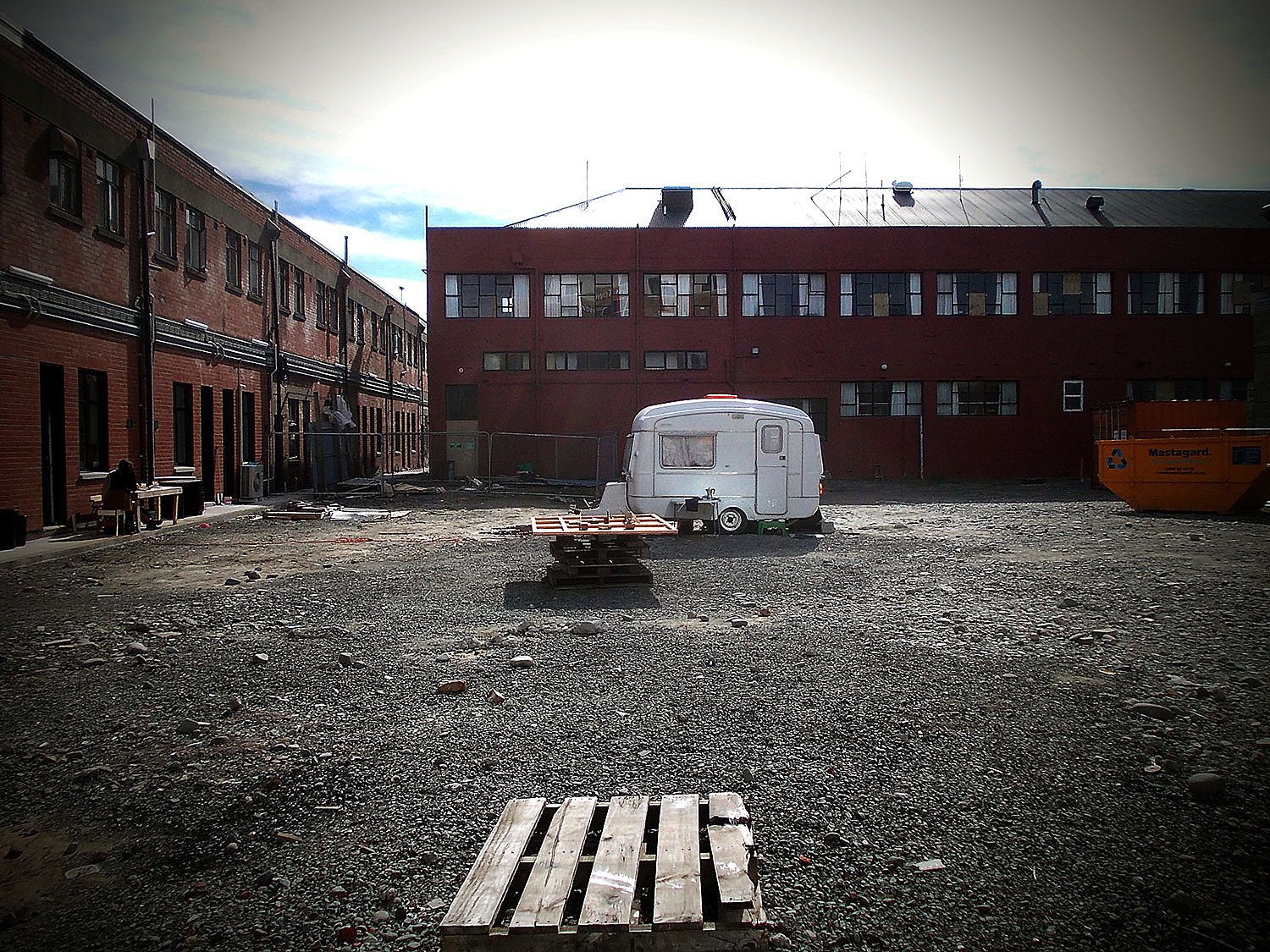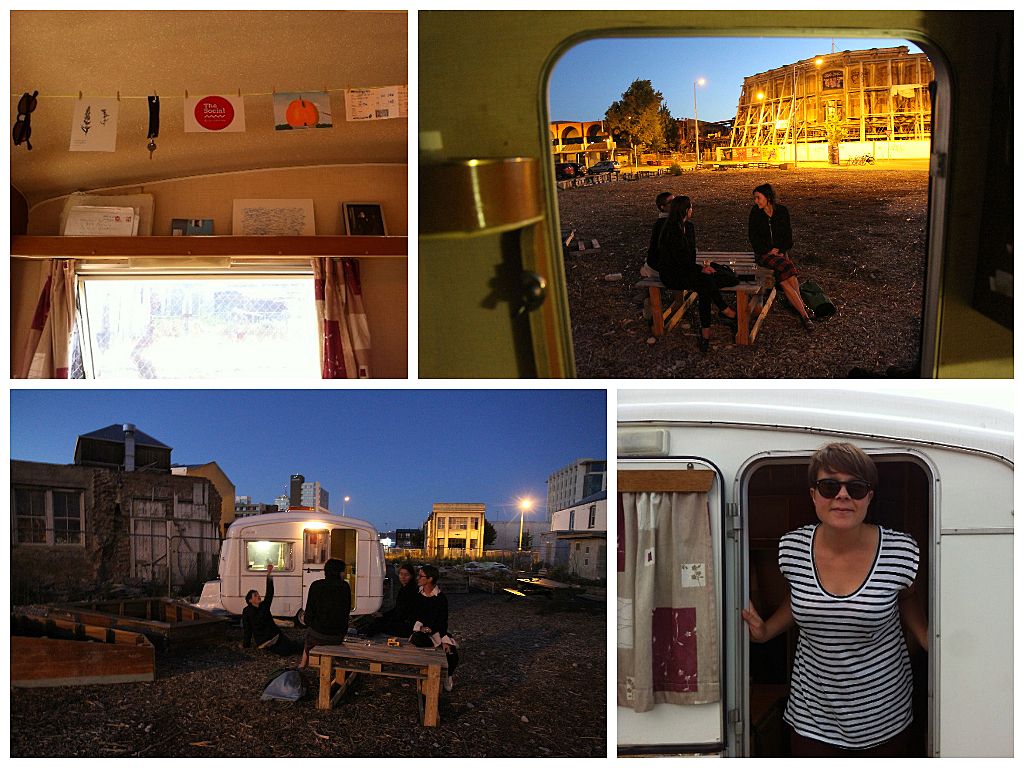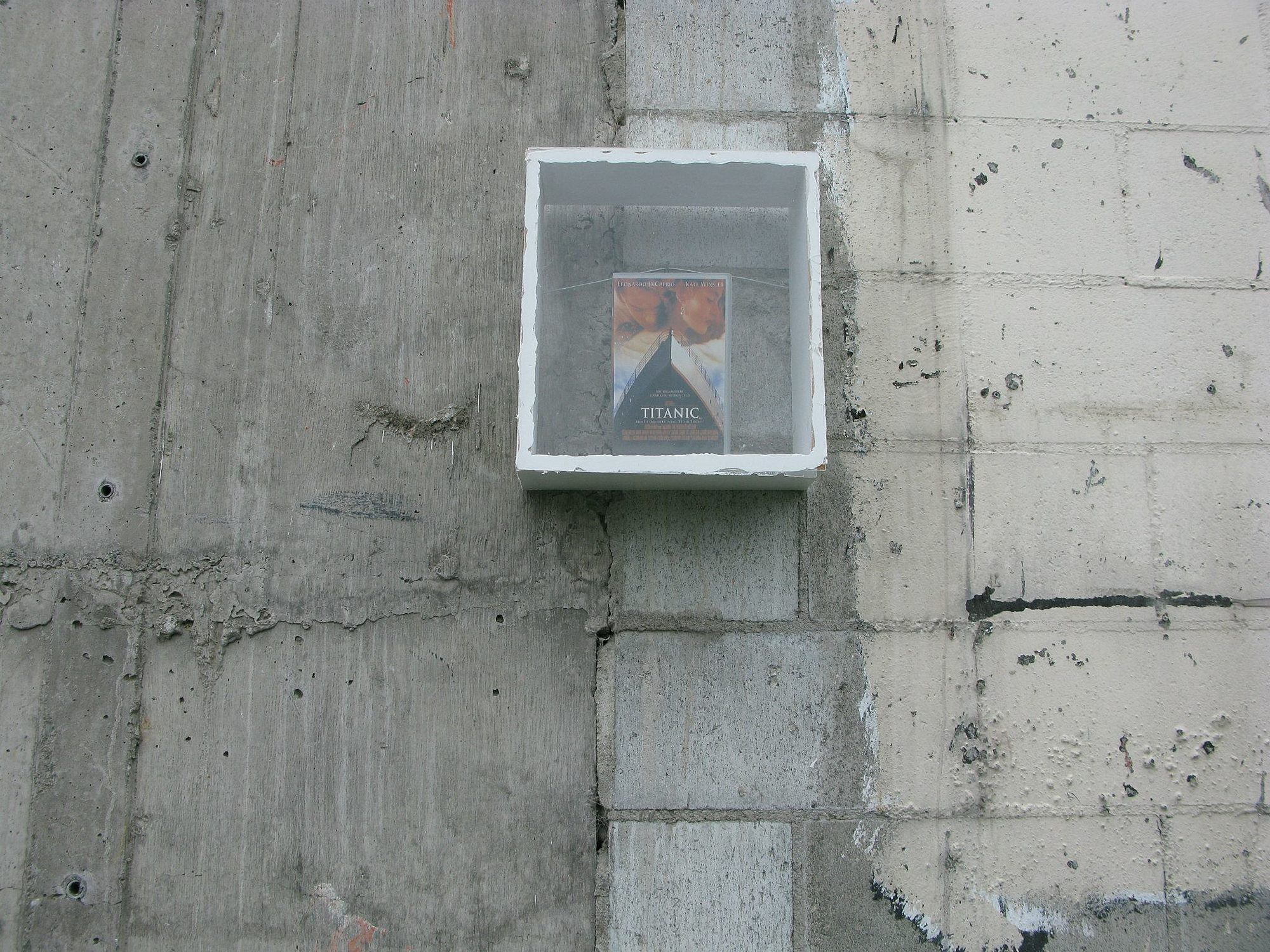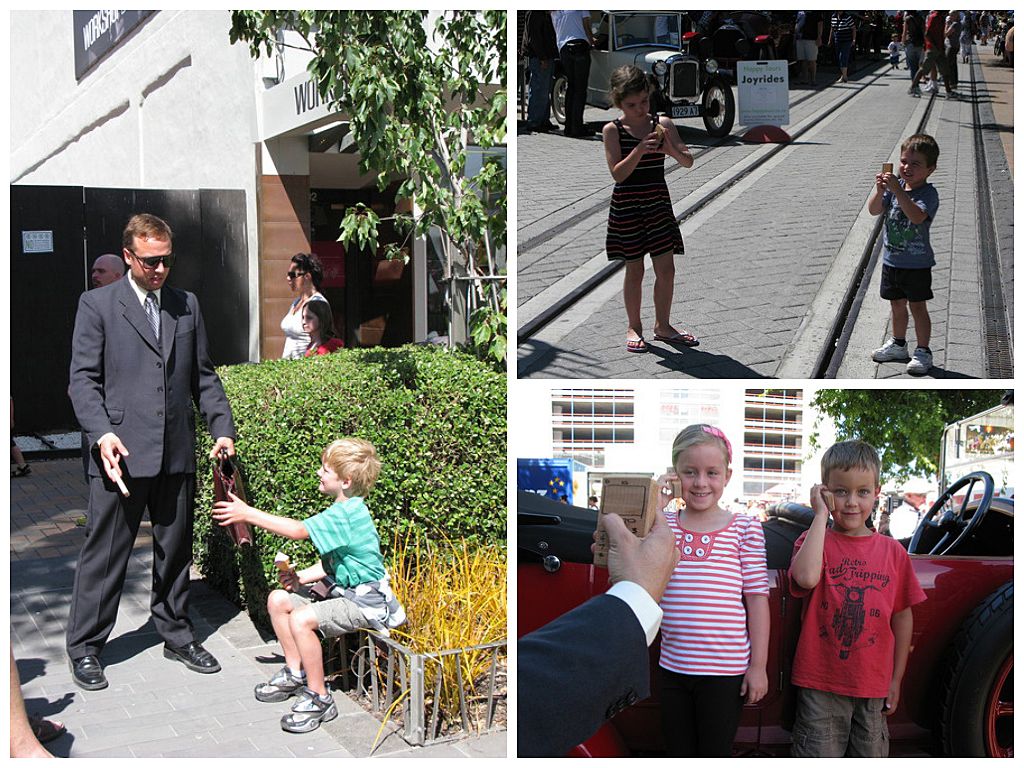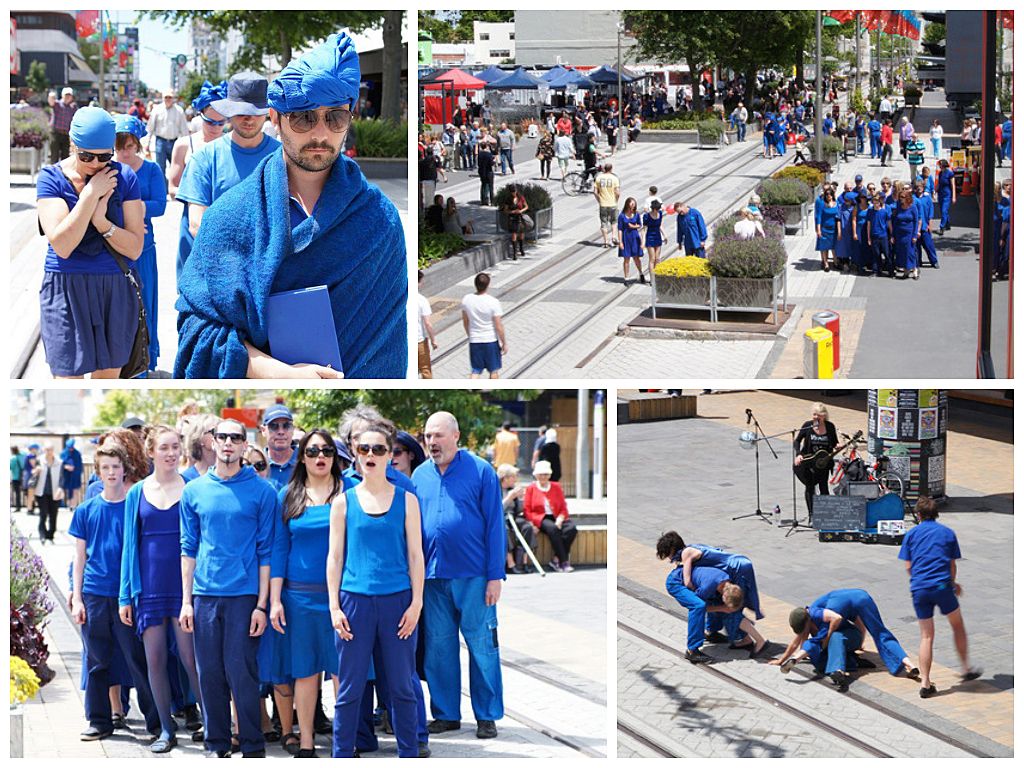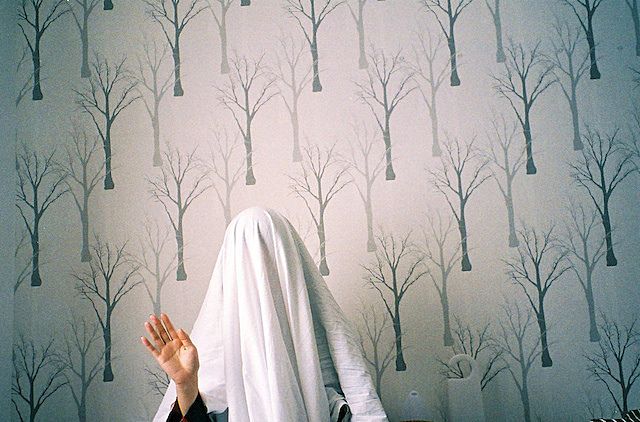Creative Thinkers of Christchurch: Gaby Montejo
Brie Sherow talks to Gaby Montejo as part of a series on the creative thinkers of Christchurch.
Gaby Montejo’s caravan, A Place to Build Art Projects, is a mobile workshop for artists. He was one of the first to approach Life in Vacant Spaces (LIVS) when our organisation started, seeking space for his workshop and the art installations he oversees as creator of the The Social arts collective. His aim was to develop a workshop space for artists in the community similar to the university workshop where he had worked as the technician. The workshop had served as more than a tools depository, but as a space for dialogue and collaboration, and this was something he was keen to replicate.
I ask Gaby who uses his mobile workshop, “Uhhhh, nobody really.” With further questioning I determine that by ‘nobody’ he means Festival of Transitional Architecture (FESTA), SCAPE public art, Temple for Christchurch (a large-scale built artwork inspired by the Burning Man festival), several international residents, and many local artists.
Gaby stresses that the process of creation is more important than the tangible resulting works of art. Results are ephemeral; they often just become part of the next process. He tells a story about climbing a volcano in Indonesia. The volcano was famous for having three differently coloured crater lakes at the top. The locals wanted to charge him for a guide but he decided to walk up on his own. He walked all night in the dark and when the sun started to rise he was in the clouds, still unable to see anything. He knew he was close when he started to smell sulphur. He ended up walking right up to the edge and almost fell in because there were no rails. He didn’t comment on the lakes, providing no description of their appearance. “It didn’t even make any sense, cause I’m colour blind, I can’t even see the colours.” The point for him was the experience of the journey, rather than the endpoint.
We’re sitting in one of the few heritage buildings left in Christchurch’s central city. Referred to as the NG building after the fashion designers in residence, the space houses creative industries and small businesses. There’s an art gallery, designer shops, co-working spaces and the Cassels’ CBD Bar - one of the first hospitality venues to open in the central city post-quake. This mix of uses sounds commonplace, to be expected in the downtown area of any city, but in central Christchurch it’s an anomaly. It’s also the only building left standing on the block. The future of the building is unresolved: as part of Christchurch Central Development Unit’s ‘Stadium’ designation, it’s been slated for demolition, but there’s been discussion around conserving it due to public support.
Gaby shows up early to ask about the meeting room at my office, the co-working space managed by the Ministry of Awesome (MoA). MoA is an organisation that is difficult to define. If you ask people what they do, you may not get a direct answer, but if you talk to anyone doing anything interesting in Christchurch, chances are MoA has been involved. Their co-working space has housed LIVS since its early days, and groups working through LIVS such as The Social, Gaby’s arts collective, often use the space on a casual basis.
Gaby argues that the current lack of gallery space should not act as a deterrent to making art, since the act of creating the work is more important than showing it at the end. Artists need to have a community to exchange ideas, to take part in what’s happening around the city and create something based on their experiences. In response, he adapted his mobile workshop and fitted out his caravan as a residency. He realised that artists outside of the city were eager to get involved. “It’s all a mystery to those outside of Christchurch. They see potential everywhere.” Typically it’s not a permittable activity to live on vacant sites, but a loophole allows for the temporary residency in a self-contained caravan. The artists live on site and the street becomes their studio. The street is the commodity of trade in Christchurch, Gaby comments. At no other time has the central city been so open for creatives to have free reign.
Before the earthquakes, Gaby noticed a lot of shoulder tapping in the Christchurch arts community. He created The Social arts collective with Lucy Matthews, a former student of his. Their aim was to open the boundaries of the local arts community so that the artwork and the city could reflect each other. They put out an open call for proposals, wanting to involve as many people as possible. With funding help from Christchurch City Council they were able to support forty small shows instead of one big show. The works responded to the spaces available, vacant lots and urban ruins. “Some of them are so delicate, somebody might pass by it and not really notice it.” Liv Worsnop’s Zen Gardenrearranged the materials already existing on a vacant demolition site. In Wetlands, Daegan Wells placed plastic ducks in urban ponds left in the remnants of demolitions. Gaby’s work‘In Case Of…’ provided emergency supplies in small glass boxes around the central city. Supplies included a gold dollar sign medallion, a skeleton key, and a romance novel. Some of the works had a more concentrated impact. Gaby describes Social Soup, a communal meal served free of charge in the newly opened ReStart container mall. More than 100 people attended, creating a social atmosphere in a space that had been devoid of people for over a year.
The space to test ideas is essential to artist communities, especially interactive and performative groups working at the fringes. The Social champions experimental art outside of traditional gallery spaces. “It’s not the kind of art that you look at while chatting and sipping wine, thinking about maybe buying something.” The Social was the first group to respond to the spaces that LIVS had available rather than requesting built space or a specific site for a project. The spaces available for temporary projects in Christchurch are often not ideal, but Gaby notes that it’s the challenge of the artist to be a critical thinker and make use of what is available. The demolished lots are exposed, and although some sites have consistent foot traffic, many still feel isolated. “What kind of site that has rubble and grey and demolished buildings around it feels warm?”
Gaby is used to being at the fringes. His family immigrated to Seattle from Cuba before he was born so he grew up bilingual in an Anglo-American city. When he was a teenager, they moved to Miami to be with his extended family. To people there, he had an accent. “They called me a yankee, but I spoke Spanish just like them.” He left America in his early twenties and traveled across 35 countries in three years. He stayed in opium dens in Turkey and spent time with the Karen tribe in northern Thailand. He’s interested in installations that mimic real life, in part trying to convey the experience of being in a foreign place. He’s drawn to interactive art: kinetic work that can be handled and has an olfactory and aural component. “If I would have been good at engineering I would’ve made animatronics, but I’d rather use my own body or the body of someone else to make something happen.”
ReStart container mall was an early venue for The Social’s work. At a series of performances in ReStart during the summer of 2012, many of the artists responded with a commercially-based arts project. Audrey Baldwin’s kissing booth was one example. She charged two dollars for a kiss with a pane of glass in between. Gaby did a performance selling ‘Fono Estupido’, making hundreds of Rimu phones and playing the part of a pushy salesman in a suit with sunglasses. He convinced children they needed a New Zealand-made dumb phone, no batteries necessary. “The dumb phones all disappeared. Then we had this imaginary walkie-talkie thing going on and we would take pictures with them.”
ReStart is more than just a commercial zone. It’s an attraction where tourists come to see both the colourful container shops and the surrounding disaster. Some artists responded by coordinating spectacles to complement the spectacle of the mall itself. One example was a flash mob organised by Lucette Hinden which involved fifty people dressed in blue navigating their way through the container mall. The performance was a surprise to the unsuspecting mall-goers, and Gaby says that the response was tremendous. “They realise that we’re having fun. They’re experiencing a time and place thing, seeing this disaster, seeing this new colourful mall, and then seeing these people dressed in blue moving in weird ways throughout the mall.”
Gaby says that Kiwis can be reluctant to respond to work. It can be tough to get feedback apart from ‘art speak’. He often gauges the merit of his art by the reactions from his family, trusting them for an honest opinion. Kiwis often keep criticism to themselves, he observes, whereas in Miami its culturally accepted to make candid comments about people’s work, appearance or actions.
I ask for his family’s favourite work, and his immediate response is the Soundgarden. The Soundgarden started with a visit to the Rekindle studio, a place where furniture is created from demolition waste wood, and artworks from the offcuts. Gaby and fellow artist Jason Ware started playing percussion with the wood scraps available. They then created instruments and put on a show at the studio, which at that time was above Shop 8 wine bar on New Regent Street. “I made a xylophone and one of these bull roarers that almost took somebody’s eye out, Tim McGurk was there with this guitar that he made out of a wok, and Jason made a drum and bass out of wood.” Subsequently, Trent Hiles from Gap Filler got in touch with a bit of funding and some ideas to expand the project. It moved outside to a LIVS space near Cathedral Square and opened with a symphony at the Festival of Transitional Architecture (Festa) in 2013. “I don’t consider myself an audio artist, but I don’t consider myself a visual artist either. Multi-media, whatever you can get your hands on. Be resourceful. Improvise.”
He believes that this is an exciting time for Christchurch. There’s a streamlined approach which LIVS is part of that makes things doable here: it’s possible to go from an idea to realisation in a short span of time. “Christchurch is probably going to go bankrupt and there’s all this pushing and pulling, but it’s all a game. I’m not authorised to say whether it’s good or bad, it just is. And the fact that other cities are not going through any kind of restructuring and rebuilding and dialogue makes Christchurch a bit more interesting for me at the moment.”
Also in this series:
Reconstruction and Renaissance
Bridget McKendry of Makercrate
Audrey Baldwin
Amiria Kiddle
Bailey Peryman of Garden City 2.0
Alex Davies
